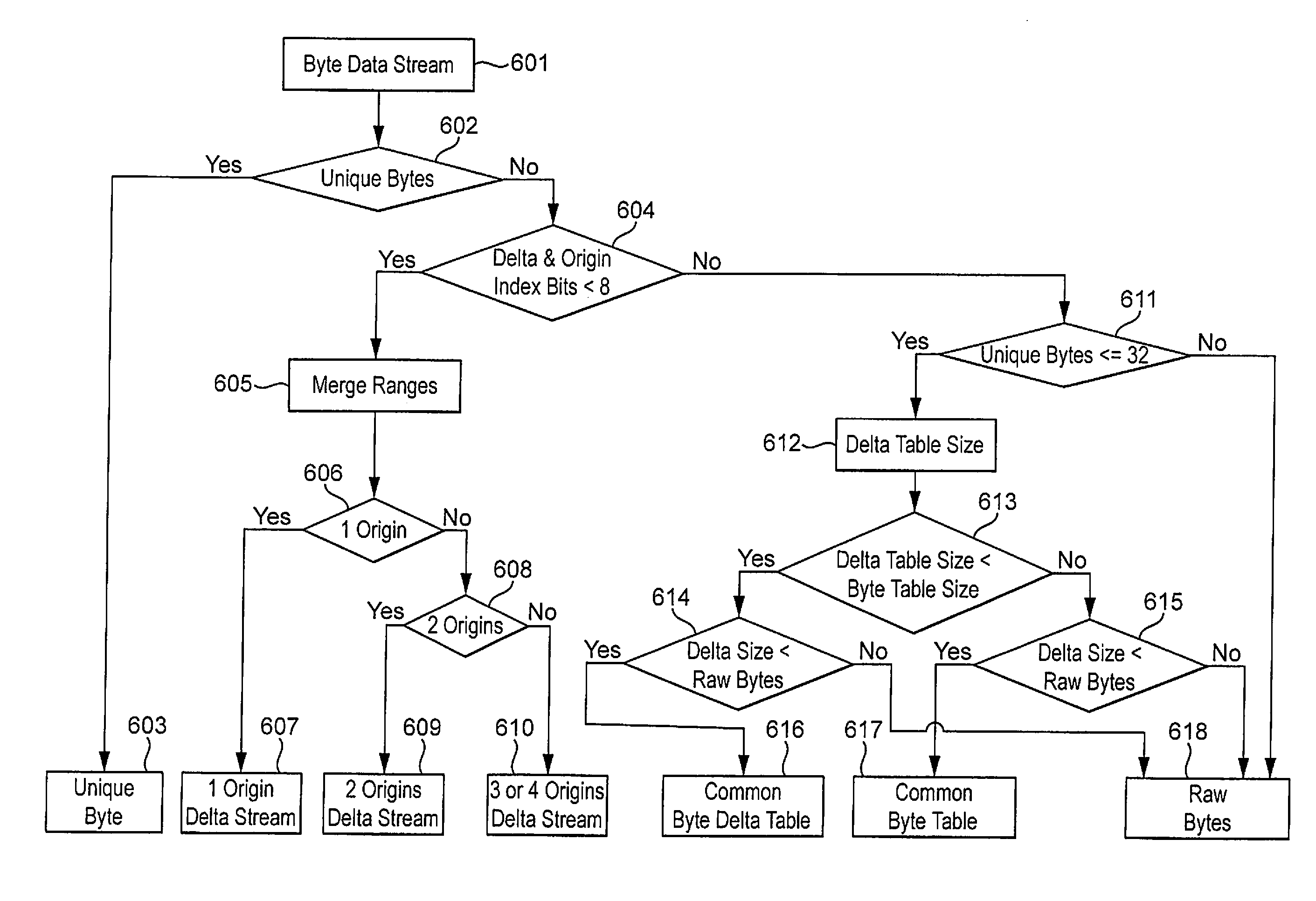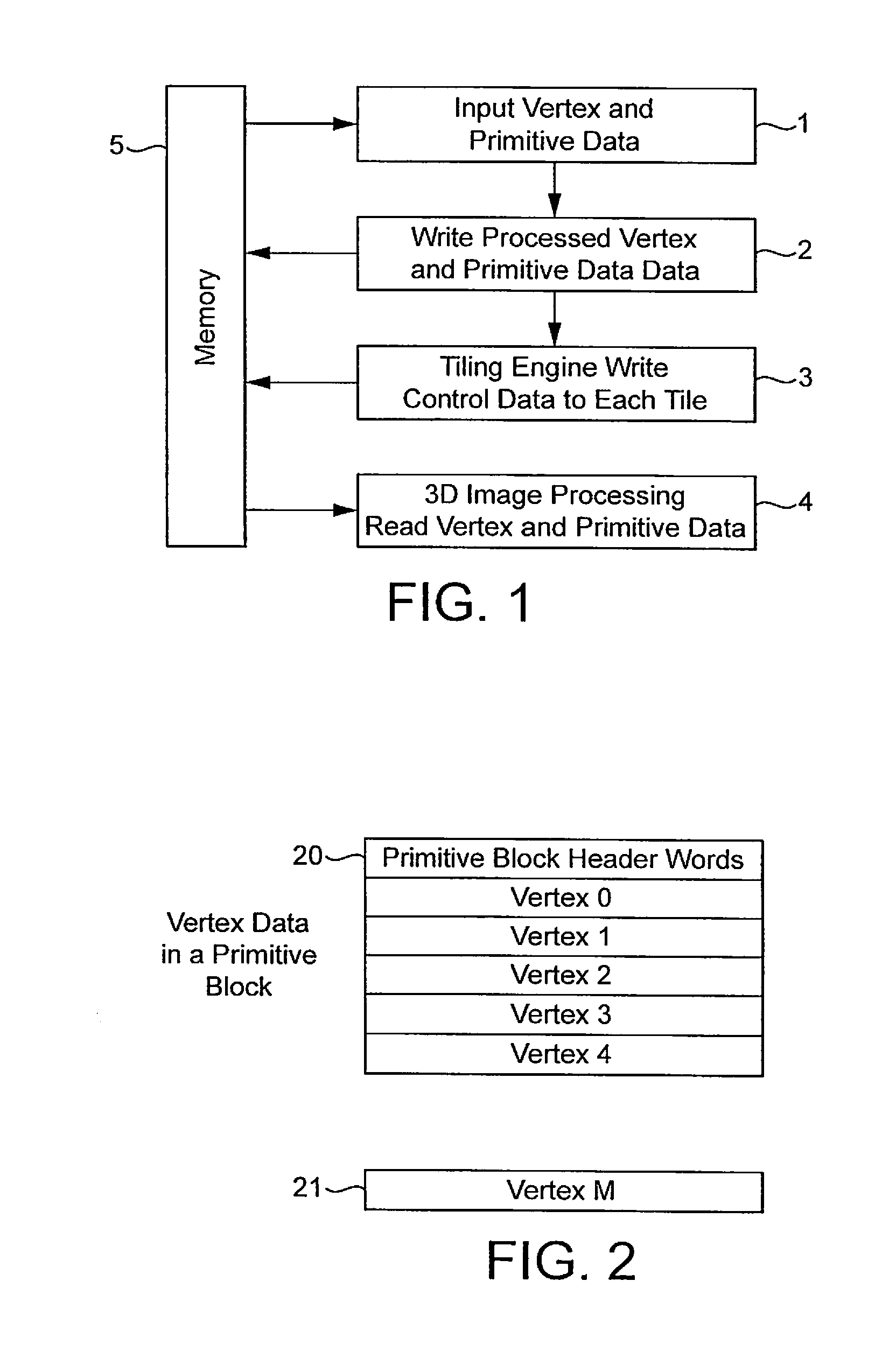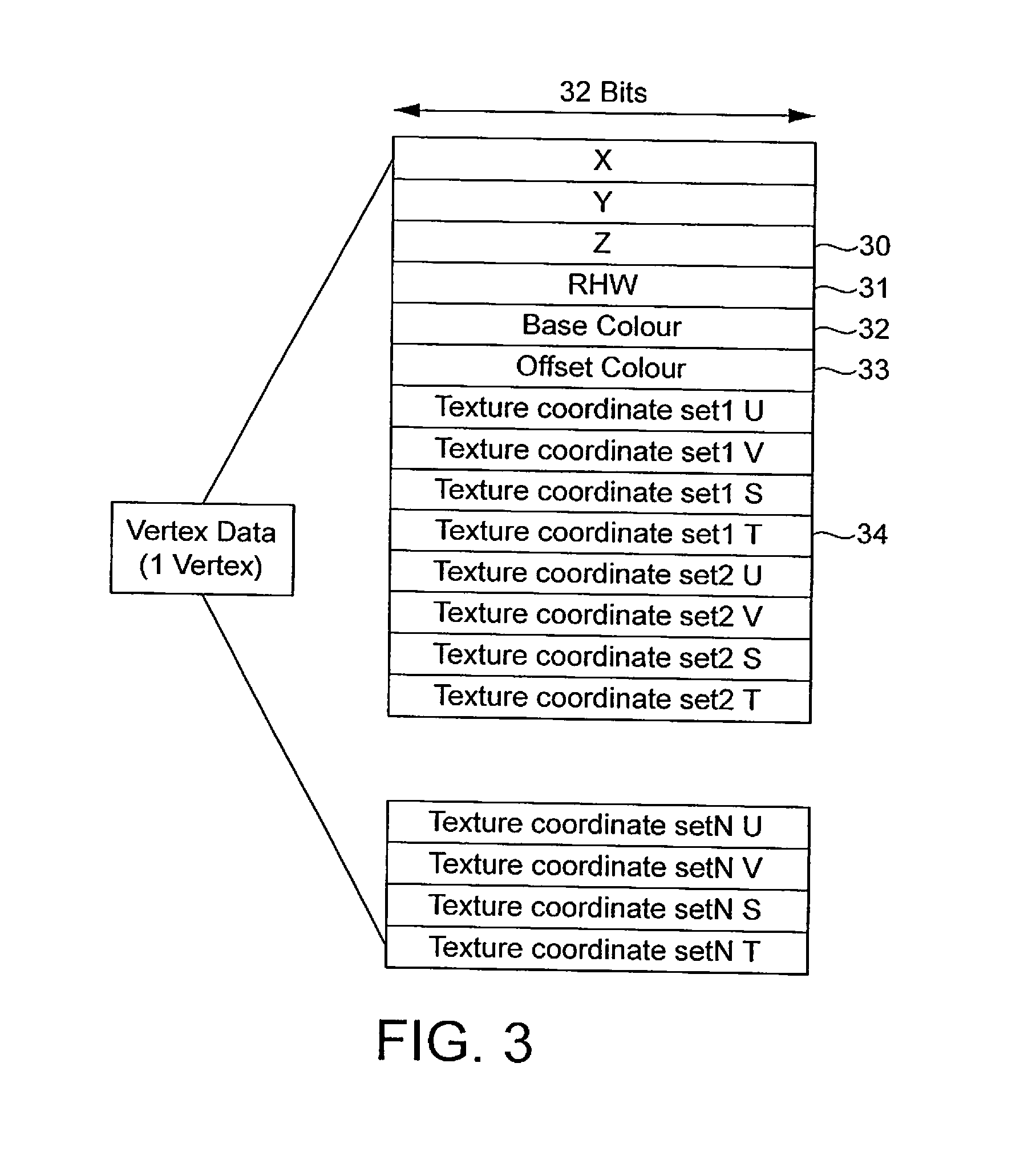Random accessible lossless parameter data compression for tile based 3D computer graphics systems
a computer graphics system and random access technology, applied in the field of random access lossless parameter data compression, can solve the problems of not being suitable for a 3d computer graphics system with a limited silicon area, the performance of the system is often limited by the memory bandwidth of vertex parameter data, and the increase in the complexity of 3-dimensional computer generated images at the same rate. , to achieve the effect of reducing the memory requirements of graphics devices and limited storage buffer requirements
- Summary
- Abstract
- Description
- Claims
- Application Information
AI Technical Summary
Benefits of technology
Problems solved by technology
Method used
Image
Examples
Embodiment Construction
[0085]The typical data structure for vertex parameter data can be seen in FIG. 3, with X, Y coordinates, Z for depth and RHW used for texturing and shading. There may be several texture coordinate sets, with U, V and S, T as optional.
[0086]The values of vertex parameter data for X, Y, Z, RHW and texture coordinates U, V, S and T are in IEEE floating point format. A value of IEEE floating point has 32 bits (4 bytes), with 8 bits for the exponent and 23 bits for the mantissa plus 1 bit for the sign.
[0087]Primitives from the application's input data stream are received sequentially in time by a tile based 3D computer graphics system and after pre-processing are grouped into primitive blocks. Therefore the primitives inside a primitive block are mostly from the same triangle mesh. It is unlikely that the data distribution of a vertex parameter data type will be totally random in a primitive block.
[0088]From a triangle mesh used by an application for an object being modeled, X and Y coor...
PUM
 Login to View More
Login to View More Abstract
Description
Claims
Application Information
 Login to View More
Login to View More - R&D
- Intellectual Property
- Life Sciences
- Materials
- Tech Scout
- Unparalleled Data Quality
- Higher Quality Content
- 60% Fewer Hallucinations
Browse by: Latest US Patents, China's latest patents, Technical Efficacy Thesaurus, Application Domain, Technology Topic, Popular Technical Reports.
© 2025 PatSnap. All rights reserved.Legal|Privacy policy|Modern Slavery Act Transparency Statement|Sitemap|About US| Contact US: help@patsnap.com



